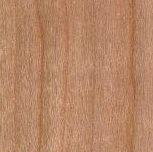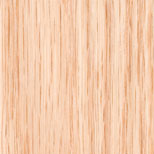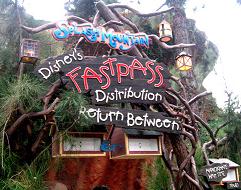Custom Wood Signs & Sandblasted Wooden Signage Experts
Based in Anaheim, Orange County, CA
|
|
Wood is the most common medium or substrate used in the manufacturing of sandblasted signs with the Western Red Cedar and California Redwood varieties being the most common. Wooden signage can provide an authentic rustic look and can easily be carved into unique styles. In our pursuit to provide you with the best options for your project, Insignia offers a variety of woods that are high quality, durable and affordable to ensure that your signs are exactly how you envision them.
|
|
|
|
|
|
Cedar is closely related to firs and typically grows 100 feet tall in seasonal mountainous climates. They have a recognizable scented resinous wood that is durable and decay-resistant. It is commonly used and has some tight knots, color differences, mixed grain patterns, vertical & flat grain laminations, random height or length laminations and has random grain patterns which produce an authentic rustic look for any signage project.
Insignia purchases high quality old growth kiln dried Western Red Cedar and other varieties with vertical grain for a better end-product.
|
|
|
|
The Giant Sequoia and California Coast Redwood trees are the largest trees in the world and some live more than 3000 years. They are native to California and Oregon, and the wood is valued for its light weight, resistance to decay, fire retardance and natural beauty with its rich red color.
Insignia is a leader in sandblasted wood signs and prefers the tight soft grain high in tanic acid that is virtually knot free. This high quality Redwood has become hard to find and cost prohibitive to use. Western Red Cedar has become an affordable alternative.
|
Cedar and Redwood
When the natural beauty of wood, weather resistance and rustic charm are equally important...
Redwood is a word that is almost synonymous with sandblasted signs. For many years redwood was considered to be the best substrate available for sandblasted signs. In the 80's, it was readily available and common to find trees near 1000 years old with very tight soft grain that blasted beautifully. They were 2" thick, contained a high amount of tanic acid, and was virtually knot free. As this high quality Redwood has become harder to find and cost prohibitive to use, Western Red Cedar has become an excellent alternative due to its availability while still providing the characteristics of old growth Redwood. Today, all heart kiln dried Redwood is available, but only about 1 3/8" - 1 1/2" in thickness. These younger harvested trees are skinnier, and almost always mixed grain. This new breed of Redwood provides a nice looking grain pattern, but is prone to crack, split, warp and is not as accepted as Cedar. Our Cedar possesses tight growth rings, and the softness of the wood allows for deep sandblasting. They are resistent to molding, rotting and insects more than any other type of wood. When you want an authentic rustic look for your sandblasted sign, there is no substitute for the natural characteristics of Redwood and Cedar. Although these woods crack, split, warp, and weather these things are part of the charm of real wood. We buy only the highest quality cedar by the trailer load to ensure consistency in quality. The cedar we purchase is old growth, kiln dried, with vertical grain. We do not purchase sapwood, therefore the wood we use is all heart just like our company.
We are still one of the very few companies that can still offer that old growth, solid thickness, high quality Redwood, but it is very expensive and rarely requested.
|
|
|
|
Black cherry wood has more commercial value as a lumber wood than any other cherry tree. Black cherry trees have dark easily peeled bark with irregular scales and a light to dark reddish brown heartwood. When exposed to the Sun, the color of the wood deepens to a reddish brown. Cherry wood often shows a waving curly figure when finished. Heartwood can have dark spots or fine black lines caused by gum pockets. Warping may occur if the wood is not dried properly. However, once cherry has been dried properly, it is a fairly durable and relatively stable wood. Black cherry wood is as strong as maple, but not as hard. The wood is uniform in texture and has tight grains. Cherry wood is rated as one of the favorites because of its beauty, versatility, warmth, personality and charm.
|
|
|
|
Oak wood has an attractive grain pattern, is dense, has great strength and hardness and is durable due to its high tannin content (resistant to insects and fungus). Various species of oak trees are cultivated throughout the world and the wood is used for furniture, alcohol fermentation, construction and much more. Red oak wood is the most common source of oak lumber. Because of its hardness and density, oak is more difficult to work with than other sources of wood. Its low knot heartwood, durability and grain pattern makes red oak wood a popular choice.
|
|
|
|
The Eastern White Pine is native to northeastern United States and southeastern Canada and is the tallest tree in this region growing over 200 feet high. Adult trees do not have low hanging branches making it more difficult to burn in a fire. The heartwood is pale brown. The sap wood, which makes up most of the tree is a pale yellowish white colour. All eastern pine ages to a golden yellow colour with exposure to sunlight. The wood can have many very large knots to no knots at all. The price will vary accordingly. It is relatively stable (once dried properly) and fairly porous with some grain pattern. It is a relatively weak wood, but is extremely common and easy to work with making white pine wood a popular and affordable choice.
|
|
|
|
Maple is common throughout the northern hemisphere and has many uses, including: ornamental horticulture, syrup and lumber. It can grow over 100 feet tall has palmate (hand-like) leaves. It is a relatively soft textured, closed pored, light beige wood with darker colored bands. Maple usually has a straight grain with some being curly to wavy. Maple varies in hardness, is difficult to work with, has limited resistance to insects and has a high resistance to abrasion. It is a great substrate for veneering, furniture and sports equipment.
|
|
|
|
Birch trees are closely related to beech and oak trees and live in northern temperate climates. They are a pioneering species that are easily replaced by oak and pine trees. The bark of is marked with long horizontal lenticels and often separates into thin papery plates. Birch wood is of medium density with fine grains, has a creamy whitish yellow sapwood to red brown heartwood with a stain-like sheen. Birch wood is suitable for veneer, and birch plywood is among the strongest and most dimensionally-stable plywoods. However, it is unsuitable for outdoor use. Birch wood is often used as an affordable alternative to black cherry wood. Birch wood is typically easy to work with.
|
|
|
|
Alder trees are closely related to birch and also live in northern temperate climates in Europe and North America. Alders benefit other plants growing near them by increasing the amount of usable nitrogen in the soil and provide a rich compost with their fallen leaves. Alders are sturdy and fast-growing. Alder wood is a fast growing renewable resource used in a wide range of applications including furniture, cabinets, panel systems and special products. Alder has fine close-grained wood that is easily stained and finished. Alder lumber has a wide range of grades that are optimized for specific functions or products.
|
|
|
|
Mahogany grows in warm tropical climates in and around Central America. Mahogany wood typically has a generally straight grain free of voids and pockets. It has a reddish-brown color that darkens over time and displays a beautiful reddish sheen when polished. It is easy to work with and is very durable. It is often used in boats and musical instruments. Santos Mahogany is a popular Brazilian species with a rich reddish brown color and a very beautiful tight grain. It displays slight color variations which gives it an exotic look.
|
|
|
|
The American Black Walnut tree is native to eastern North America and typically grows 100 feet and has a grey-black & deeply furrowed bark. American Black Walnut wood is chosen for its dark-colored heartwood. It is a medium density, closed pored, tight grained and strong wood with a purple overtone. It has a beautiful finish, but one must watch grain direction when planning. It is used for gunstocks, furniture, flooring and a variety of other woodworking products.
|
|
|
|
Purpleheart is also native to tropical climates in and around Central America, just like mahogany. They can grow up to 100 feet high. Purpleheart trees are prized for their beautiful dark brown to rich purple heartwood. Ultraviolet (UV) light exposure turns the wood to a brown color. This effect can be reduced with a finish containing a UV inhibitor. Purpleheart wood is very hard, fine to medium grained, dense and difficult to cut. This wood is often used for fine inlay work and furniture.
|
|
|
|
African Padauk grows to about 100 feet tall and is native to tropical climates of western and central Africa. Padauk wood is very durable, dense, open pored, coarse textured and resistant to termites. Ultraviolet (UV) light exposure turns the wood from a bright orange to a brown color. This effect can be reduced with a finish containing a UV inhibitor. It also used for drums due to its quality tonal resonance.
|
|
|
|
Zebrawood is native to western Africa (Gabon, Cameroon and Congo) and is closely related to acacia and kudzu. It can grow to about 150 feet tall. This dense wood has a striped medium texture of straight interlocked or wavy grains. The sapwood is very pale. The heartwood is a pale golden yellow. Both have dark brown to black streaks of varying widths. Zebrawood has limited availability. Also, fresh-cut zebrawood releases an unpleasant odor which dissipates as the wood dries. It is a hard decorative wood used for vaneer, wall paneling and custom furniture.
|




















